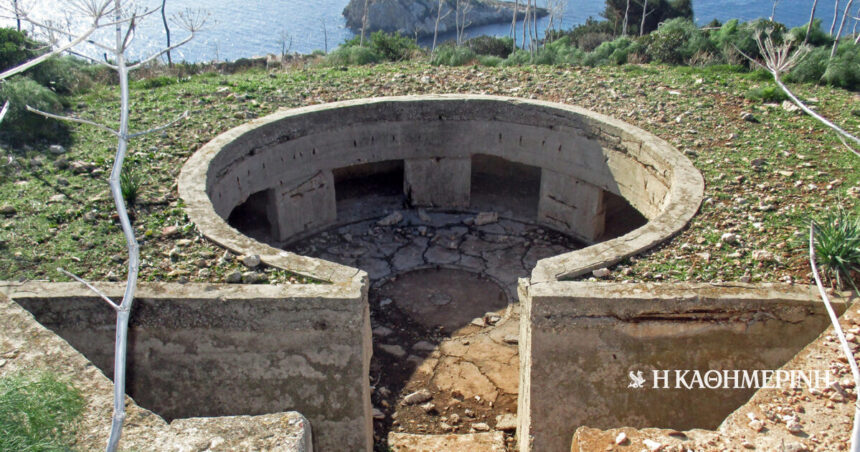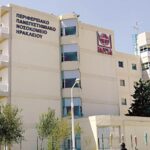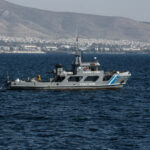Athens still hides secrets. At a time when it is a global tourist destination, it seems to have testified on social media and its last hidden corner. And yet, a persuasive, independent researcher and writer, Konstantinos Kyrimis, aims to show us that there are still invisible sides, often hidden next to us.
A short distance from the coast of the southern suburbs of the capital are forgotten imposing fortifications of World War II and, similarly, in Aegina, not far from the well -known temple of Aphaia, there are dawn and underground invisible buildings associated Our modern history.
Combining his double love for martial and urban history, the researcher recently completed a field research on the Saronic Gulf coast, where he identified the footsteps of an unknown aspect of the war history of the place: a trio of coastal naval forts built in Silk.
On the occasion of the study signed by himself (“underground naval fortifications in Attica 1936-1994”), which was recently released in a second augmented edition by the Hellenic Institute of Maritime History, we have a discussion with him by learning about the forgotten Defense Line .
“When I first heard about World War II’s naval fortifications in Aegina I was surprised, as this island, for most Athenians, is a destination for holiday, excursions and excursions and not a place with military history,” he will tell us.
The beginning
We ask him how his research began: “The beginning was made in the archives of the Navy History Service, the responsible body for preservation and management of the Navy’s Historical Archive Archive, which is based in the Botanical. I spent many hours there, discovering that at that time the Navy, in addition to preparing its fleet, was also devoting an ambitious plan to fortify the Saronic Gulf in such a way that the enemy could neither pass nor land. “
What was this plan recommended? “In 1936, under John Metaxas, the Higher Authority of ADPA (ADPA), a Navy service aimed at controlling the naval passages, began to operate. Administratively ADPA divided the whole country into six naval defensive areas (NAP), most important NAP3, based in Piraeus and the area of responsibility in Argosaronic. Simply put, they devised a plan on how to block enemies if they were trying to attack the Salamis Navy and Piraeus. Three nautical forts were built: the southern fort of Aegina in Perdika, the northern fort of Aegina in the Cape of Tourlou, as well as another veins on the islet off Vouliagmeni. Some more auxiliary projects were built, but they were the main forts. “
The three fortifications “devised a plan on how to block enemies if they were trying to attack the Salamis and Piraeus port. Three nautical forts were built: south in Perdika, north at Cape Tourlou, and one more on the islet of veins off Vouliagmeni. “
“If the enemy wanted to land in Athens or offend Piraeus with his ships, he would have to pass either by sea minefields or narrow sea strips between these three forts and the cannons would dip him. With a radius of up to 20 km. These forts were “locked” what was going on in front of them, “Mr Kyrimis adds -” they even made everything underground so that they were not identified and unable to be destroyed. Imagine a hostile ship passing in front of one of these forts. It would be impossible to see it, and even if he did, it would be almost impossible to destroy it with his cannons, while the fort would be comfortable against him. “
Of the three forts, the most powerful was the one in the Tourlos, which because it had a larger zone of responsibility was equipped with the main gun of four cannons. These cannons (like the other weapons of the fort) for economic reasons had been dried by the decomposed “Lemnos” battleship – a venture, which for its time seems impossible. “Indeed, it was a feat,” the author will tell us. “Even with the means we have today this project it would be extremely complicated to implement. Imagine how the cannons were managed and sailed from the “Lemnos” which was decommissioned at the Salamis Sailor, which weighed hundreds of tones and with the meager technical means they had transported to the height of Tourlou to Aegina, where they were dug. along with their towers. And they did this by reinforcing them with a 60-80cm concrete wall and a shielded steel roof. In essence, they turned the mountain into an impeccable battleship! “

On the pages of this edition we discover some impressive technical details on the equipment of the forts, such as that their towers had two cannons and that they had been installed in a hole dug on it, with a depth and a ten -meter diameter. Around each tower, the excavation continued and special auxiliary spaces were created, such as gunpowder warehouses and firing centers. In addition, the forts were equipped with impressive two -meter -long mirrors hiding under ground to prevent them from being detected and lifted with a special mechanism, but also an underground power station with four German dieselists, which testified to the know -how that testified to them. Germans.
“This is something of a historical interest,” adds Con. Kyrimis, “as it was contrary to the practice of the land army, who chose to work with the French on the northern border, on the so -called Metaxas line.” The Navy, for its own fortifications, trusted the Germans. So in 1936 three advisers from Germany came and undertook to provide know -how for these projects. And it is not strange that they advised German products to be used. Indicatively, the Navy foresaw the military of men in the shelters, in classic beds, but they took a lot of space. The Germans proposed the use of (German -made) folding metal bouquets, as it was finally done, so the shelters could accommodate more people. Corresponding supplies were also made on German air recycling devices for the case of chemical weapons infestation. “
“The venture was contrary to the practice of the army, who chose to work with the French on the northern border, on the so -called Metaxas line. The Navy, for its own fortifications, trusted the Germans. In 1936, three advisers from Germany came and undertook to provide know -how. “
“They were planted in both veins and Aegina hundreds of trees,” the author informs us, “something that happened for two reasons: first, to camouflage the forts of the enemy in the air and, secondly, for the reasons So he could cultivate fruits. In addition, the forts belonging to the forts were often rented to citizens, so there was some profit. So they managed to make money, hide from the enemy and have autonomy in some types of food. Therefore, we are not just talking about simple concrete constructions, but about complex “ecosystems”.
“Metaxas Line Attica”
Large, multifaceted projects, then, that to succeed had to put the bar very high. “The specifications were top,” Mr Kyrimis will confirm. “They were so strict and demanding that these three forts were called by many” Metaxas Attica Line “” likening them to the well -known fortifications on the Greek -Bulgarian border.

In the end, however, these unknown miraculous works with which our Navy shielded the critical passages of the Saronic Gulf were not used in hostilities. The spectacular cannons that were ready to fight in their underground towers, while they were ready to defend Athens, did not have to do so. “Indeed,” the researcher adds, “but if they did not exist, the enemy might dare the landing or an infringement of the naval. He may not know the details, but he knew that we had predicted to fortify. Although they did not have to defend our waters, these forts also protected the Attic sky, as much of the basin’s air defense was based on their anti -aircraft cannons, which even scored a – set – numbering number. “
The debate closes with a thought about the future: “I believe it would be worthy of these impressive but unknown forts to be promoted and exploited by our Navy. They could open some days of the year for the public and some of their underground spaces may be converted into a museum. “








